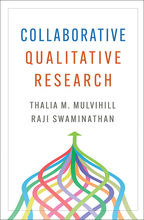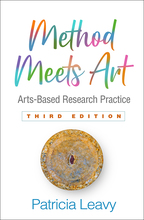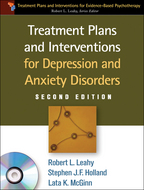Teaching Qualitative Research
Strategies for Engaging Emerging Scholars
Raji Swaminathan and Thalia M. Mulvihill
- Why Is It Imperative That We Build a Pedagogical Culture Around Preparing the Next Generation of Qualitative Researchers?
- What Does It Mean to “Teach” Qualitative Research?
- Introduction to the Debates, Discourses, and Complexities Inherent in Teaching Research
- Different Fields and the Issues in Common for Teaching Qualitative Research
- Institutional Arrangements and Politics
- Chapter Summary
2. So You’ve Been Asked to Teach a Qualitative Research Course: Socialization and the Qualitative Researcher
- Course Design Principles, Processes, and Taxonomies
- Design Principles of Courses and Understanding the Learner
- Approaches to Teaching Qualitative Research
- Should Qualitative Research Be Taught within Single Disciplines or Should a Cross-Disciplinary Approach Be Advocated?
- Why Teach Critically? What Other Approaches Are Possible?
- General Course Design Principles
- Knowing the Learner: Countering and Working with the Resistant Learner
- Inviting Students into a Community of Learning
- Reflection or Reflective Practices
FACULTY REFLECTIVE JOURNAL EXERCISE 2.1. Prior to Teaching the Course
FACULTY REFLECTIVE JOURNAL EXERCISE 2.2. Planning to Teach
FACULTY REFLECTIVE JOURNAL EXERCISE 2.3. Thinking about Teaching
- Chapter Summary
Sample Syllabi Templates (Face-to-Face, Workshop and Studio Based, Online)
EXAMPLE 1. Some elements included in a syllabus for a face to- face, theory-driven approach to an introduction to qualitative inquiry
EXAMPLE 2. Some elements included in a syllabus using workshop and studio pedagogies for a face-to-face graduate seminar on ethnography and education
EXAMPLE 3. Some elements included in a syllabus for an online introduction to a qualitative inquiry course
3. It’s Never Too Early to Start “Thinking Qualitatively
- Using a Holistic Approach to Thinking Pedagogically about Teaching Qualitative Research
- What Is a Holistic Pedagogy? And Why Is It Needed?
- Key Characteristics of Holistic Pedagogy for Teaching Qualitative Research
- What Does It Mean to Think Qualitatively?
- Teaching Qualitative Thinking through Experiential Learning
CLASSROOM EXERCISE 3.1. Grocery Store
CLASSROOM EXERCISE 3.2. The Outsider
- Teaching Qualitative Thinking through Dialogue
CLASSROOM EXERCISE 3.3. 20 Questions
- Facilitating Students to Ask Qualitative Questions
- Example of Qualitative Thinking Leading to Research from Sidewalk
- Example of Qualitative Thinking Leading to Research from Bad Boys
- Reflexive Thinking for Qualitative Research Topics
CLASSROOM EXERCISE 3.4. Brainstorming Qualitative Research Topics
- How to Ask a Qualitative Research Question
CLASSROOM EXERCISE 3.5. Research Topic and I (Eye)
- Chapter Summary
4. What Do You Mean That Being “Biased” Isn’t Wrong?: Reflexive Exercises to Promote Awareness and Discussion of “Positionality” in Qualitative Research
- Discussing and Tackling the Questions of Bias
- What Is Bias in Critical Qualitative Research?
- What Is Positionality and How Does It Influence Qualitative Research Projects?
- Hierarchical Positionings and the “Other” in Qualitative Research
- The Role of the Qualitative Researcher
- Ethical Considerations
- Outsider, Insider, Friend, Peer, Companion
CLASSROOM EXERCISE 4.1. Teaching Reflexivity
- Identity and the Qualitative Researcher
CLASSROOM EXERCISE 4.2. Understanding Your Positionality
- Chapter Summary
5. Crafting a Research Problem: The “So What?” Question
- The “So What?” Question
- Students’ Responses to Research Methods Courses
CLASSROOM EXERCISE 5.1. Opening a Conversation
CLASSROOM EXERCISE 5.2. Examining Assumptions
CLASSROOM EXERCISE 5.3. Examining Assumptions through Autobiographical Writing
- What Is a Research Problem in Qualitative Research?
- Distinguishing between Researchable Problems and Practical Problems
- What Makes a Problem Researchable?
CLASSROOM EXERCISE 5.4. Linking Qualitative Questions and Research Purpose
- Advocacy Research
- Identity Work and the Research Question
CLASSROOM EXERCISE 5.5. Imagining Researcher Roles and Identity
- Asking the “So What?” Question
- Identifying the “So What?” Question, or the Gap in Published Studies
CLASSROOM EXERCISE 5.6. Learning to Locate Researchable Problems
- Chapter Summary
6. Teaching Students to Write a Review of Literature: A Roadmap, a Conversation, and Metaphorical Imaginations
- What Are the Students’ Assumptions of Literature Reviews?
- How to Build an Argument in a Review of Literature
- An Advocate Approach
- A Jury Approach
- Types of Literature Reviews
- Descriptions and Discussion: Thematic, Scoping, and Critical
- Functions of a Literature Review
- Students’ Experiences of Crafting Literature Reviews
- Tools for Approaching a Literature Review
- Using Tables in Literature Reviews
- Methodological Transparency and Metaphorical Imaginations
CLASSROOM EXERCISE 6.1. Analogies and Reviews of Literature
- Prepare to Search
- Pedagogical Devices for Teaching Novice Researchers about Literature Reviews
- Critical Reading and Writing: Learning the Vocabulary of Research
CLASSROOM EXERCISE 6.2. Analyzing Literature Reviews
CLASSROOM EXERCISE 6.3. Library Excursion
- Rubric for Reviews of Literature
CLASSROOM EXERCISE 6.4. How or When to Use Citations and References
- Chapter Summary
7. Participant Observations, Research Questions, and Interview Questions: The Art of Observing and Questioning Self and Others in the Research Process
- The Art and Craft of Observation
CLASSROOM EXERCISE 7.1. Role Play
- Helping Students Think through the Focus of Observations
- Teaching Ideas for Learning to Observe and to Write Field Notes
- The Art and Craft of Interviewing
- Starting the Conversation: What Are Good Interviews?
- Research Questions and Their Links to Interview Questions
- Preparing Interview Protocols: Things to Think About
CLASSROOM EXERCISE 7.2. Learning to Formulate Interview Questions
- Practicing Interviewing with Peers
- Teaching Listening for Developing Interview Skills
CLASSROOM EXERCISE 7.3. Brainstorming What It Means to Listen
- Modes of Interviewing: Distance versus Proximity
- Phone Interviews
- Focus Group Discussions and Group Interviews
- Narrative Interviews and Life History Interviews
- Recruitment of Participants
- The Emotional Work of Interviewing
- Postinterview Reflections: Voice Memos as a Way to Reflect on Interviews
- Reflecting on the Content of the Interview
- Reflecting on the Process
- Lessons Learned
- Activities for Teaching Interviewing Skills
CLASSROOM EXERCISE 7.4. The Art and Craft of Interviews
CLASSROOM EXERCISE 7.5. Interview Modes
- Chapter Summary
8. Teaching Emergent Methods of Data Collection
- Teaching Emergent Methods of Data Collection
- Why Emergent Methods?
- What Are Multimodal Data?
CLASSROOM EXERCISE 8.1. Brainstorming Interesting Phenomena for Qualitative Research Data Gathering
- Teaching Visual Literacy
CLASSROOM EXERCISE 8.2. Keeping a Visual Diary
- Multiple Forms of Data Gathering
- Visual Methods
- Photographs and Visual Data for Empowerment
- Photovoice Methods for Interviewing
WORKSHOP: PHENOMENOLOGICAL ETHNOGRAPHY. Using Photos and Other
Artifacts to Explore a Cultural Phenomenon
- Performance- and Arts-Based Data
- Issues, Ethics, and Best Practices for Image-Based Research
- Data Gathering Online
CLASSROOM EXERCISE 8.3. Data Gathering Online
- Chapter Summary
9. Teaching Creative Analytic Practices
- Teaching Creative Analytic Practices
- Data Analysis
- Teaching Organization: Dealing with Piles and Files
- Data Management Plans: Developing Systems to Manage the Data
- Data Expansion
- Data Reduction
- Goals of Analysis
- Practical Tips for Handling Data for Coding
- Teaching Students Where Codes and Themes Come From
- Teaching Analysis as a Collective Classroom Activity
CLASSROOM EXERCISE 9.1. Trying Out Data Analysis in a Large Group
- Questions as a Way to Teach Data Analysis
- Who, What, Where, When, Why, and How?
- Reflective Questions That Interrogate Data
- Questions for Peer Review
CLASSROOM EXERCISE 9.2. Peer Feedback in Data Analysis
- Qualitative Analysis Strategies
- Teaching Analysis through Visual Displays
CLASSROOM EXERCISE 9.3. Creating Visual Displays and Visual Memos
- Teaching Interpretation
- Use of Metaphor to Teach Qualitative Analysis
CLASSROOM EXERCISE 9.4. Looking for Metaphors and Analogies
- Using Theory as a Building Block for Analysis
- Chapter Summary
10. Writing Qualitative Research Reports and Articles
- Writing Doctoral Dissertations, Master’s Theses, and Refereed Journal Articles
- Teaching about the Different Sections through Examples
- Low-Stakes Writing—or Practice Writing as a Pedagogical Strategy
- “Workshopping” as a Method to Teach Writing Qualitative Research
- Creating Peer Circles for Workshopping Writing
- Writing Findings in Qualitative Research
- Making Claims from Data
- Making Meaning from Data
- Telling the Lesser Stories through Summaries
- Using Pseudonyms or Composites for People and Places in Qualitative Research Findings
- Writing the Discussion Chapter
- Acknowledge Limitations and Delimitations
- Writing Articles during and after the Dissertation
- Writing for Journals and Conferences
- What Is Quality in Qualitative Research?
CLASSROOM EXERCISE 10.1. A Dialogue on Quality
CLASSROOM EXERCISE 10.2. Presenting the Study in a Conference Format
- Chapter Summary
- Conclusion: Final Thoughts
References
Index
About the Authors













